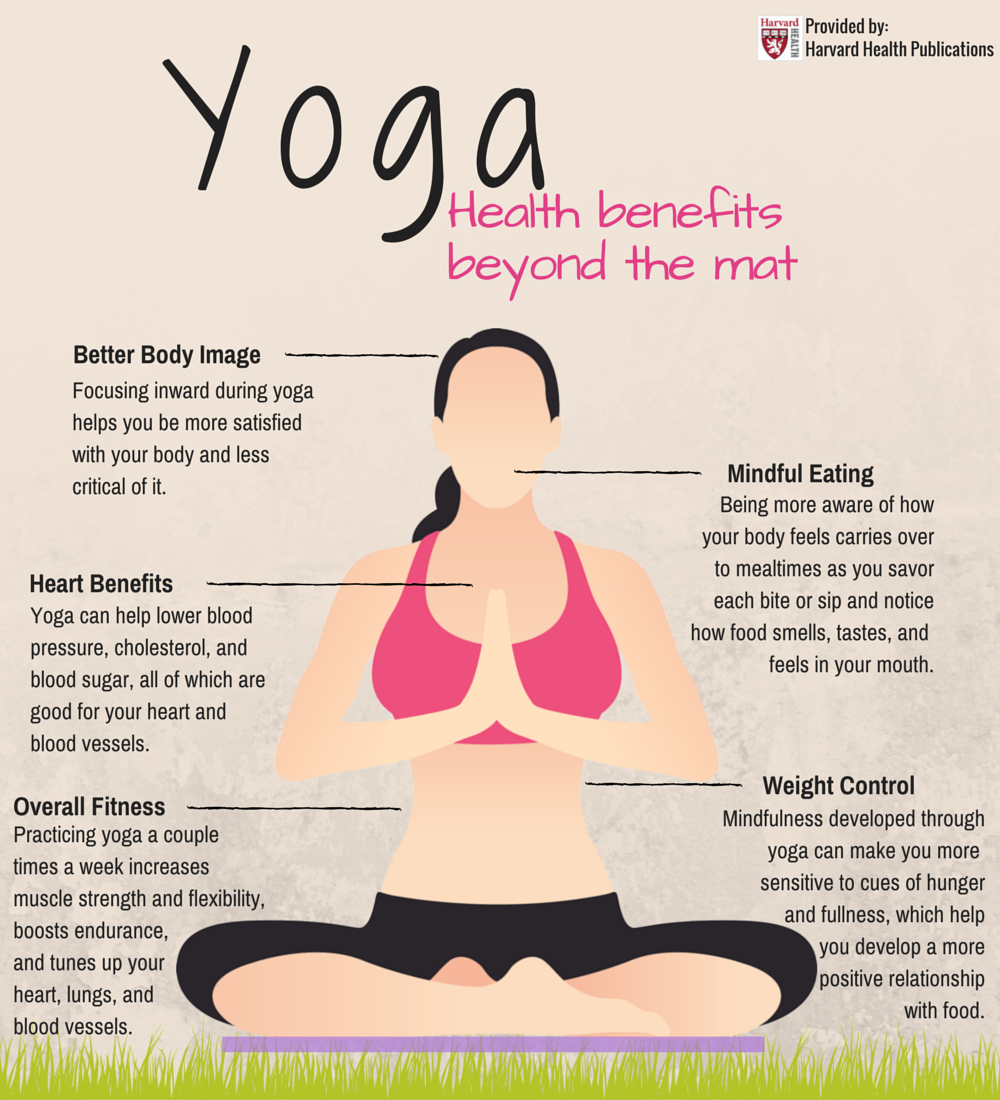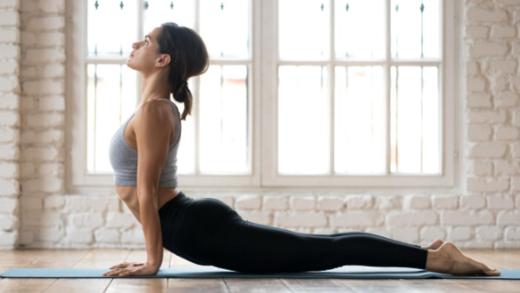
Many yoga poses put strain on the shoulders and can result in injury. Before you begin a new exercise in yoga, it is important that you understand the anatomy of your shoulder joint. The three bones that make up the shoulder joint are the scapula (shoulder blade), clavicle (collar bone), and humerus (upper arm bone). Each of these bones has its own range of motion and meet at the elbow joint.
The quads are the muscles that are responsible for knee extension. The gluteus maximus and the front and back thigh muscle are joined by the gluteus maximus. These muscles are responsible for hip flexion, abduction, and hip flexion. These are not the only muscles that play a role in yoga poses. They are all integral to each pose. Each of these muscles are important and it's easy to see why. You'll begin to feel the importance of each as you work through different yoga poses.
The hamstrings play a role in knee extension. They are derived the the ischial tubesity in the pelvic. They also contribute to hip extension. They are vital for many yoga poses. But, without proper alignment, these muscles can be hard to access. This will make it more challenging but will improve your flexibility and balance. Once you are more familiar with the anatomy and workings of the hamstrings, it is safe to move on.

The hamstrings can also be benefitted from yoga. The hamstrings control knee extension and are located in the pelvic bowl's ischial tuberosity. They are also responsible for hip flexion, and plantarflexion. Because they are responsible in many movements of the body, the hamstrings play an important role in many yoga poses. This allows you to find the one that is right for you.
It is important to not strain the SI joint too much when performing the balancing poses. We should aim to have a stable, even range and strong core. A pose's alignment is another important consideration. Overstretching a joint can lead to pain in the knee. This can lead to an injury. You can use props to help you align more properly.
Overmobilized scapulae: While this may give the appearance of a twist, it does not necessarily occur in this pose. Spine rotation can also be affected depending on how your arm is placed. When the meniscus is fully relaxed, it moves to the back. A well-aligned pelvis helps the body's muscles to work in the correct direction. You should have a balanced distribution of your spine and hips.
The pelvic joint must be flexed in order to achieve an even range of motion in the knee joint. The pelvis should be neutral. If they are not, the pose can cause spinal flexion and may cause injury. If this is the situation, you may want to avoid this pose. While your leg is straight, push the meniscus to the rear of the joint.

The pelvis is composed of three bones, femur, thighbone and femur. They are round and have a cup shape. The head of the femur sits in the pelvis, which is a ball-shaped bone at the top of the thigh. The femur also houses the lower leg bones. Each one of these bones is unique in its shape and angle. This can have an impact on the ability to do certain poses.
Beginners should be familiar with the anatomy and movements of the yoga poses. The correct alignment of the yoga poses will be easier as you get more familiarity with your body. David Katz, a world-renowned author on anatomy and yoga, has written the book Anatomical Position. He provides an explanation of the anatomy and effects of each pose on the body. The anatomy can be applied to everyday life once you are familiar with it.
FAQ
Which workout is best to build muscle?
Two main types of exercises are required for building muscle mass. These are compound movements and isolation exercises. Isolation exercises target particular muscles, while compound movements focus more on several groups at once.
Choose exercises that test all your major muscle groups to improve your workouts. This ensures you're always pushing yourself during your workouts.
MyFitnessPal can help you keep track of your activity. It can track everything from calories burnt to weight lifting. It also allows you to create meal plans customized for your goals.
What is a good 7-day workout schedule?
A seven-day exercise plan should include cardiovascular training (running/biking/swimming), strength exercises (using weight machines, free weights) and one flexibility/core program (yoga or Pilates). Each activity should be done at least once per week. Maximum 45 minutes should be allotted for each session.
Cardiovascular Exercises: Swimming, Cycling, Running
You should aim to get at least 60 mins of cardio exercise per week. For best results, aim for 75 minutes per week. Cardio exercises can increase blood flow and stimulate the growth of muscles.
Strength Training
Cardio exercises work on the heart and lungs. Strength training works on the muscles and bones. Strength training builds lean muscle mass, which helps burn calories even when resting.
Flexibility and Core Workouts
Your whole body will be stronger if you have flexibility and core training. Both yoga as well as Pilates are great choices.
What is a good exercise routine?
You must exercise regularly to stay fit. It doesn't make a difference what kind of activity you choose. As long as you do it often, it will be beneficial. Consistency is the key. It is important to stay consistent in order to get results.
Begin by starting to do a little bit of physical activity each day (like walking). Increase the time you spend exercising each day until you can do 30 minutes. This could be running, biking, swimming or weight training.
It's important that you get your exercise done every day. Don't miss any sessions unless you have an excuse.
When exercising outside, make sure you have the right clothing and shoes. Weather conditions can also affect your ability and safety to exercise.
While exercising, make sure to drink plenty water. Drinking alcohol at this time can lead to dehydration. Caffeinated beverages such as tea, coffee, and cola should be avoided. They may give you energy, but they will also dehydrate you.
When you first start exercising, you might feel tired after completing your workouts. You'll feel more energetic and refreshed if you keep going with your exercise program.
What if I exercise and drink alcohol?
Yes. Alcohol has increased energy expenditure, speed up recovery time, and reduced soreness.
Additionally, alcohol can increase insulin sensitivity and make it easier to absorb glucose.
Alcohol can also cause dehydration which can lead to a slower metabolism. It can also decrease testosterone production, which can affect muscle-building ability.
For these reasons, women shouldn't drink alcoholic beverages before working out. Women who have consumed a lot of alcohol should wait at most 24 hours before working out.
Nursing mothers should abstain from alcohol as much as they can.
Men should drink only one glass of alcohol per day.
Statistics
- An estimated calorie range for moderately active adult males falls between 2,200 to 2,800 calories per day, depending on age. (eatright.org)
- By John Thompson Take a whopping 38% off a set of PowerBlock Pros. (menshealth.com)
- Candidates and applicants must pass all four tests at 70% (minimum level) to graduate from Basic Deputy U.S. Marshal (BDUSM) Training. (usmarshals.gov)
- The PRS enabled risk stratification for overall prostate cancer and lethal disease with a four-fold difference between men in the highest and lowest quartiles (HR, 4.32; 95% confidence interval [CI], 3.16-5.89). (pubmed.ncbi.nlm.nih.gov)
- Get free shipping and 25% off today. (healthline.com)
External Links
How To
What should I have before I go to the gym?
In order to lose weight, you must eat fewer calories that you burn through exercise. All your nutrients must be consumed.
This includes protein, carbohydrates, fats, and vitamins.
The best way to do this is by eating smaller meals throughout the day rather than three large ones.
It is possible to not do as well if your body is too full when you work out.
Water is better than energy drinks that contain sugar and caffeine. This will help you stay hydrated as well as energized.
You should ensure that you get enough fluids. Over-consuming water could cause your body to lose its electrolytes.
Electrolytes are essential for the body's proper functioning.
You could also drink sports drinks if water is scarce. They are rich in sodium, potassium, calcium and magnesium as well as other minerals.
This will replenish your electrolytes. These won't, however, replace the sweat you lose from exercising.
You could also consider taking a multivitamin tablet if you are concerned that you might lose too much salt from exercising.
These include extra vitaminB6, which regulates your body's sodium level.
If you don't know the salt content of your foods and beverages, supplements shouldn't be relied upon.
They aren’t controlled by the Food and Drug Administration.
Certain brands of sports drinks might contain more sodium than others.
Some sports drinks may contain artificial sweeteners or other preservatives. These ingredients could cause digestive problems.
Sea salt is an option if you don't want to eat too much salt.
It contains fewer chemicals then table salt.
Sea salt has a low level of iodine. It is an additional mineral required for healthy thyroid function.